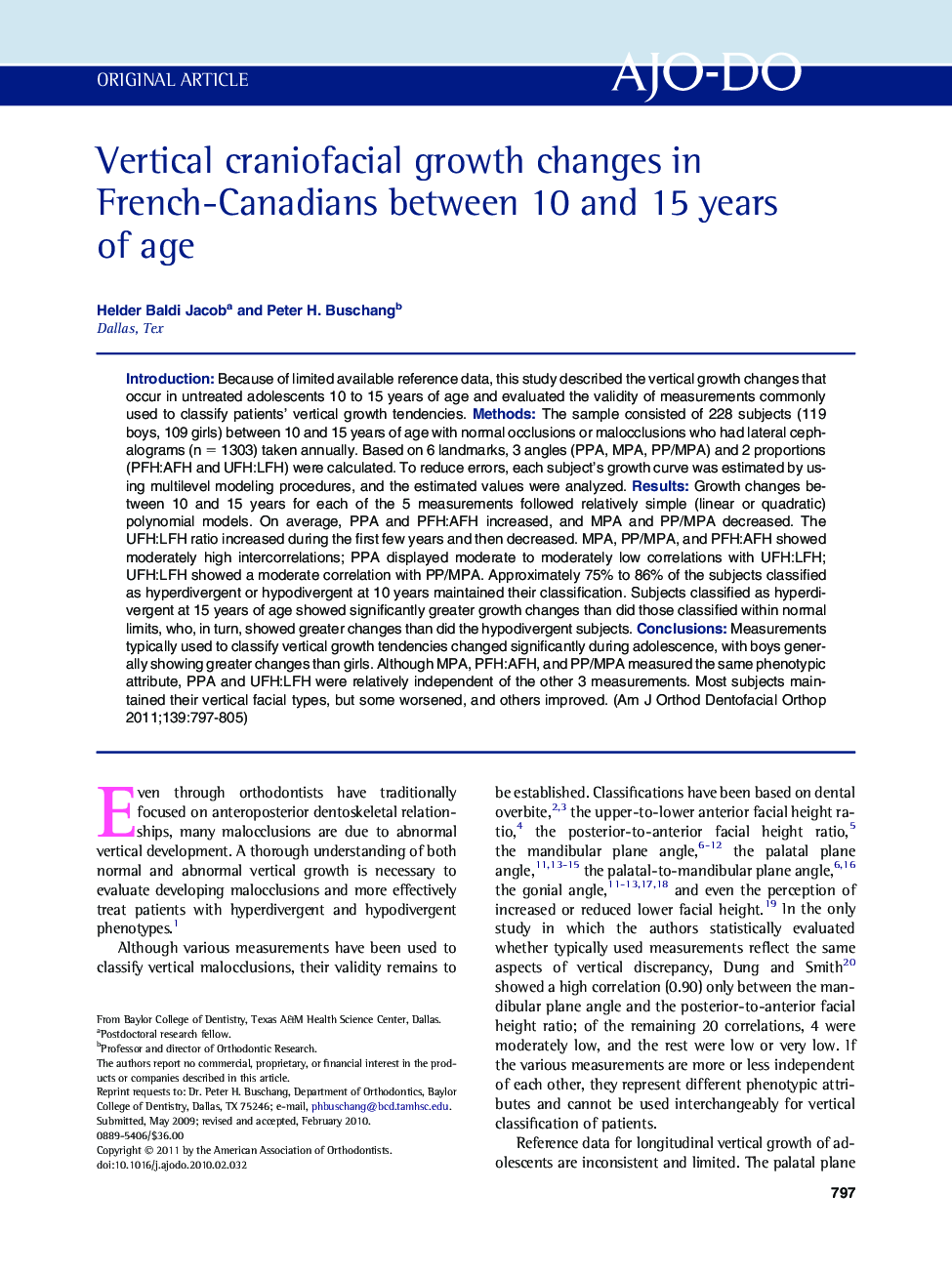| Article ID | Journal | Published Year | Pages | File Type |
|---|---|---|---|---|
| 3117252 | American Journal of Orthodontics and Dentofacial Orthopedics | 2011 | 9 Pages |
IntroductionBecause of limited available reference data, this study described the vertical growth changes that occur in untreated adolescents 10 to 15 years of age and evaluated the validity of measurements commonly used to classify patients’ vertical growth tendencies.MethodsThe sample consisted of 228 subjects (119 boys, 109 girls) between 10 and 15 years of age with normal occlusions or malocclusions who had lateral cephalograms (n = 1303) taken annually. Based on 6 landmarks, 3 angles (PPA, MPA, PP/MPA) and 2 proportions (PFH:AFH and UFH:LFH) were calculated. To reduce errors, each subject’s growth curve was estimated by using multilevel modeling procedures, and the estimated values were analyzed.ResultsGrowth changes between 10 and 15 years for each of the 5 measurements followed relatively simple (linear or quadratic) polynomial models. On average, PPA and PFH:AFH increased, and MPA and PP/MPA decreased. The UFH:LFH ratio increased during the first few years and then decreased. MPA, PP/MPA, and PFH:AFH showed moderately high intercorrelations; PPA displayed moderate to moderately low correlations with UFH:LFH; UFH:LFH showed a moderate correlation with PP/MPA. Approximately 75% to 86% of the subjects classified as hyperdivergent or hypodivergent at 10 years maintained their classification. Subjects classified as hyperdivergent at 15 years of age showed significantly greater growth changes than did those classified within normal limits, who, in turn, showed greater changes than did the hypodivergent subjects.ConclusionsMeasurements typically used to classify vertical growth tendencies changed significantly during adolescence, with boys generally showing greater changes than girls. Although MPA, PFH:AFH, and PP/MPA measured the same phenotypic attribute, PPA and UFH:LFH were relatively independent of the other 3 measurements. Most subjects maintained their vertical facial types, but some worsened, and others improved.
